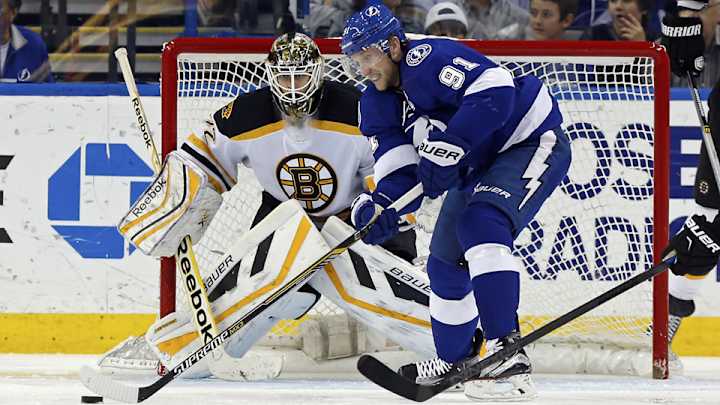New teams rising to fill NHL's growing power vacuum

The death of Alexander the Great. The assassination of Franz Ferdinand. The Sharks likely missing the playoffs for just the second time in 18 years. These moments stand apart in history as the signposts of sea change.
O.K., maybe San Jose missing the postseason lacks the historical significance of the first two examples. But not unlike in ancient Macedonia or in 20th-century Europe, a power vacuum is forming in the NHL in 2015, the first year in eight in which a Sharks–Bruins Stanley Cup finals seems impossible. And a unique set of circumstances will ensure that none of their rivals will rise to the top for some time. This season portends a new era of parity.
The Seeker: Scout Hakan Andersson a hero of the Red Wings’ playoff streak
While the San Jose, Boston and, potentially, the Kings are the most notable teams at risk of missing the postseason, the league’s powerhouse teams are also facing decline. The Blackhawks are rapidly approaching the third circle of cap hell, the one where they will have to pay Jonathan Toews and Patrick Kane with oversized game-show checks. The Red Wings too—with an aging core, a terminal inability to attract free agents and a coach without an extension—seem destined for hockey mortality.
That’s not to mention that Detroit and all the franchises made in its image have lost their natural advantage: tactics. Advanced statistics have turned the rest of the league on to the puck-possession, volume-shooting game the Wings exploited to their benefit for years. Maybe one day the pendulum will swing too far towards their brand of freewheeling hockey, and L.A.’s insistence on big forwards and the dump-and-chase will serve as a valid countertactic, but in the short term Detroit-style hockey is still winning hockey.
• GALLERY: Ranking fifteen NHL players who fly under the radar
Better player evaluation has also led to a better dispersal of talent throughout the NHL. Teams cannot mine a single foreign market as thoroughly as the Red Wings did (and still do) in Sweden (though teams maintain a legacy of credibility in countries that they have historically scouted more successfully than others). Similarly, consecutive top draft choices do not lead to the automatic rejuvenation of a franchise, e.g., the Oilers, nor does the presence of a single generational talent guarantee sustained dominance, e.g., the Penguins and the Capitals. The promulgation of good complementary players, combined with the salary cap, has made it harder to stack a roster and keep it stacked.
What makes 2015 a real crossroads for the league, though, is the alignment of a wide-open playoff field with a monumental draft class. The NHL has a very clear bottom on which the top teams have fed well this year—due in large part to purposeful tanking. But next season, the bottom may disappear. The Sabres could well start the season with a top line of Evander Kane, Connor McDavid and Sam Reinhart. Jack Eichel could have a similarly transformative effect on the Coyotes. And Edmonton has to get it together eventually, right?
Notebook: Suffering Sabres fans deserved to cheer Coyotes
There will still be great hockey teams. But will we ever see teams that so regularly threatened for the Stanley Cup as the Sharks (hold your choking jokes, please) and the Red Wings did? Predicting the playoff teams in the preseason was like shooting fish in a barrel between the last two lockouts. San Jose and Detroit were locks (both reached the playoffs in seven out of seven seasons)). The Predators, Devils, Flyers, Rangers and Pittsburgh made six out of seven; the Canucks, Ducks, Bruins and Washington made five. Such a situation may prove unique in the age of the salary cap.
If any two teams can become the Sharks and the Red Wings of a new era, they are the Lightning and the Islanders. Both teams bear obvious resemblance to the great Detroit teams. They are strong down the middle (Tampa Bay’s Steven Stamkos and New York’s John Tavares), and have deep blue lines, league-leading possession stats and a willingness to draft purely for skill.
Also like the Red Wings, neither team is particularly exceptional in goal. For that reason, Andrei Vasilevskiy—whether successful or not—is the most important player for the next decade in the NHL. Should the Lightning develop one of the league’s top goalies, they could emerge from the NHL’s next great dynasty.
But for the time being, at least, the Islanders are not even the best team in New York, while Tampa Bay is just one of four teams in contention for the Presidents’ Trophy. Thus, we enter the NHL’s Hellenistic Period, perhaps more fun for everyone involved, but bound to be least remembered and romanticized than the era immediately before it.
